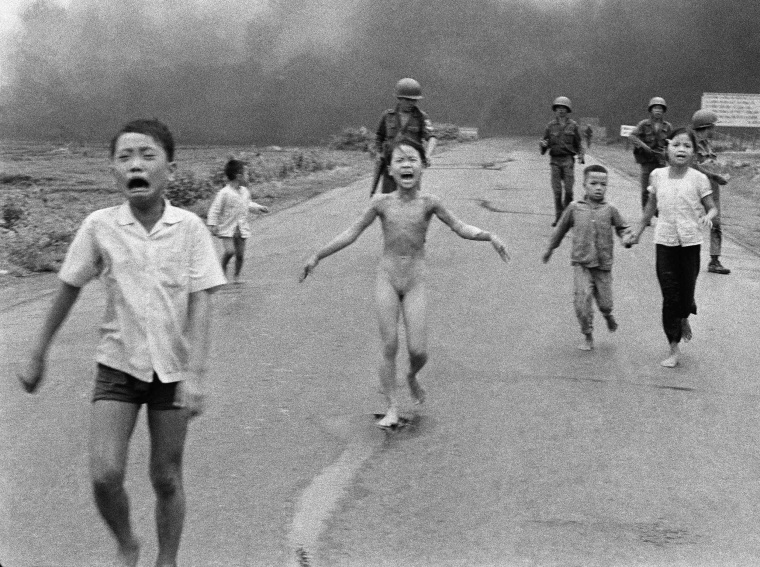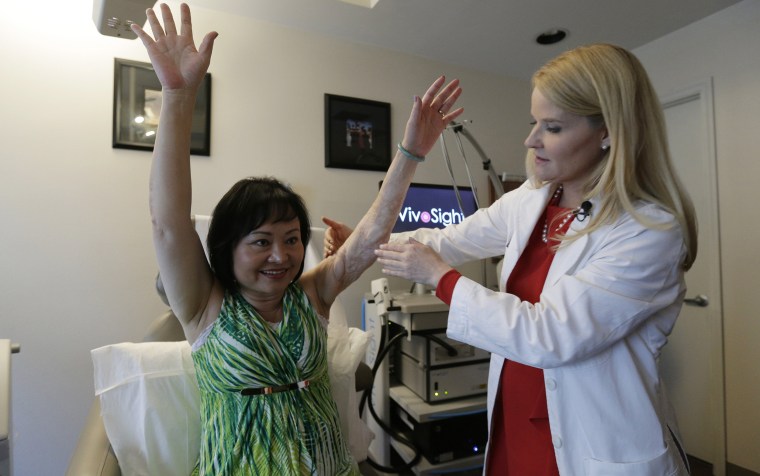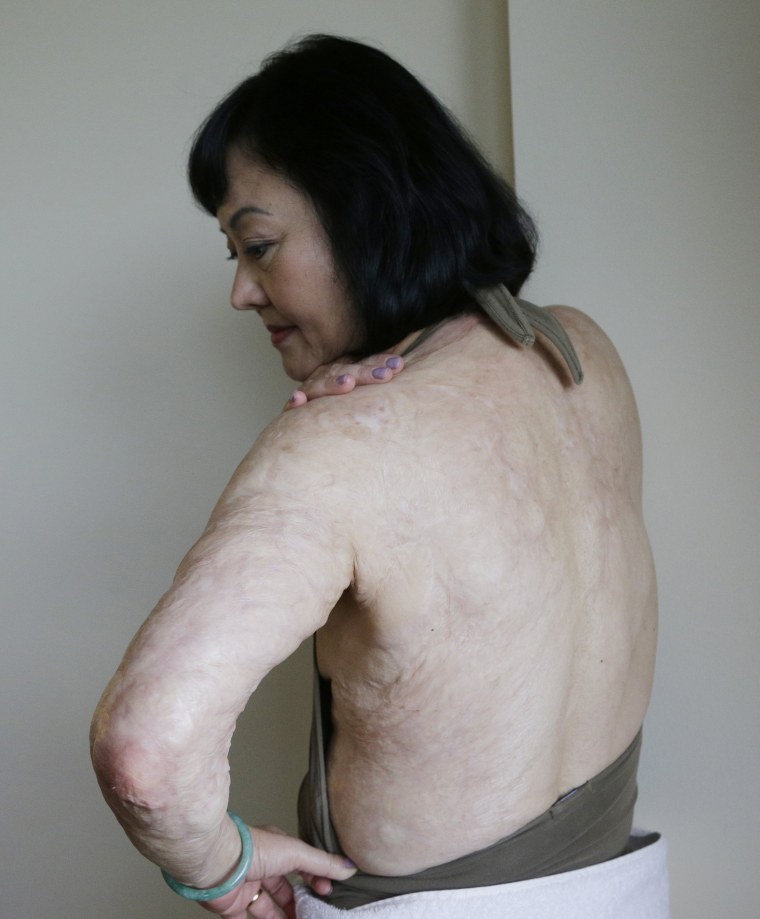Forty-three years ago, a photo from the Vietnam War shocked the world. A small girl stood naked in the street, crying out in pain. She had torn off her clothes, which were covered in napalm and burning.
The South Vietnamese army accidentally dropped the jelly-like chemical on her village, Trang Bang, outside of Saigon. More than a third of her body was burned, leaving her with scars that are four times as thick as her skin in some places.

Since then, Kim Phuc, 52, has experienced pain and loss of mobility. Sometimes simply holding her purse cause discomfort; she can’t quite reach out as far as she’d like with her left arm. Phuc believed she would experience pain until she was in heaven. But thanks to laser treatments from Miami Dermatology & Laser Institute, Phuc will experience less discomfort and have fewer scars.
RELATED: Burned as a baby, woman finally meets nurse who cared for her
“I would say Kim’s scars are moderate, but do give her trouble and cause her pain. Burn and trauma patients suffer more than any other patient in medicine,” Dr. Jill S. Waibel, a dermatologist who is treating Phuc, told TODAY.com via email. “Kim is an extraordinary human being who was transformed by her injury.”
After photographer Nick Ut snapped the now iconic image, he took Phuc to the hospital and demanded that she receive treatment. Few expected her to live and she was in the hospital for more than two years. Waibel told the AP that at the time of her injuries, many patients with burns as severe at Phuc’s, and covering less of their bodies, would have died.

Waibel learned of Phuc’s current problems when her father-in-law saw Phuc speak at a church. He felt so bad that Phuc experienced so much pain that he approached her and shared Waibel’s contact information and explained that she had an expertise in treating scars.
But Phuc — a humanitarian with a nonprofit that helps children of war — didn't call at first. Then she saw a TV report about Chandra, Trae and Jordan Berns, triplet burn victim that Waibel treated with lasers. Phuc decided to call.
RELATED: New treatment improving burned triplet's scars
“In our experience, no matter what type of scar a patient comes into our doors with, we have seen lasers improve each wound significantly,” said Waibel. “Having the ability to take care of these patients that face much more difficult roads than the average patient is an honor and I see it as a responsibility of mine.”
Phuc, who has lived in Canada since the 1990s, underwent her first treatment in September, and she could have as many as six to nine treatments, which she receives at no cost. Waibel uses fractional lasers to create tiny injuries in the skin; this vaporizes the scar tissue.

As the areas heal, new collagen develops, helping the formation of new skin. Waibel will also use laser assisted drug delivery to distribute poly-L-lactic acid, also known as Sculptra, subcutaneously. This process enables the development of new fibroblast, connective tissue cells that help the creation of new collagen.
“By using both laser and Sculptra simultaneously, we will get a robust renewal of Kim’s healthy collagen,” she said.
Waibel believes that Phuc's positive outlook on the situation will be a key factor in her healing process.
“She has developed an appreciation for life and a sense of responsibility to help others by sharing her story. Her suffering has added a humanizing element to the face of war and the tragedies she endured. It is an honor to work with Kim,” Waibel said. “She has inspired me as well.”